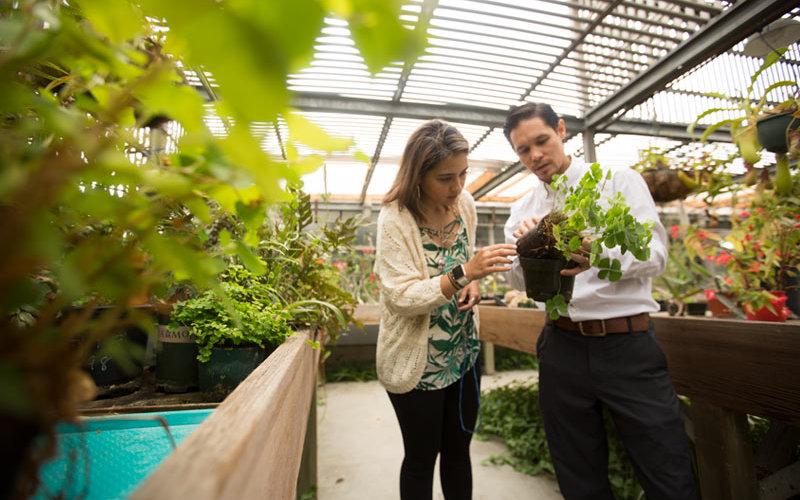
Plant biologists knew little about the genomes — an organism’s DNA — of two closely related aquatic ferns, azolla and salvinia, until now.
In a pioneering collaborative study with researchers across the globe, Cal State Fullerton biologist Joshua P. Der and his students have uncovered all the genes that make up the ferns’ DNA.
“My lab was responsible for discovering all of the genes in the DNA sequence. Both of these ferns represent a major lineage of plants that has gone unrepresented among sequenced plants,” said Der, assistant professor of biological science.
“The new genome sequences have provided some new insights into the evolution of plant genomes, including a history of ancient genome duplication in ferns.”
Der, who began the research in early 2015, is a lead investigator and a lead author on the international collaborative study of the aquatic ferns, published July 2 in Nature Plants. Der’s research students, undergraduate Stephany Angarita, a health science major, and biology graduate student Mathew Simenc, are among the journal paper’s co-authors.
The paper has 42 authors from 10 countries, including scientists from Cornell University, Duke University, University of Alberta and Utrecht University, Netherlands.
“It’s important research because no one has studied these ferns before, and also our study can be used for other studies about plant genome sequence,” said Angarita, a first-time co-author.
One of the biggest barriers to sequencing fern genomes has been the usually large genome size of ferns, averaging four times the size of human genome, Der noted. The human genome is made up of over 3 billion genetic letters, he added.
However, the genome sequences of the two ferns are relatively small for ferns, which made the sequencing possible. Once they had the genome sequences in hand, Der and his students used high-tech supercomputers, operated by CSUF’s Center for Computational and Applied Mathematics, to analyze the genome sequences.
Angarita joined Der’s lab in summer 2016 as part of CSUF’s (STEM)² summer research program when she was a student at Cypress College. After she transferred to CSUF, she continued working in his lab and focused on identifying centromere and telomere sequences — structures found on a chromosome — in the fern genomes. Her results are included in the final description of the genome sequence for the journal paper. She has also presented her research at scientific conferences, including the California Botanical Society meeting.
“The combination of bioinformatics and genetic coding caught my attention,” said Angarita, who is on track to graduate next year.
“This project helped me develop a new set of computational skills that can be applied to almost anything I do,” added Angarita, who plans to earn a doctorate and pursue a research career in the medical field.
Simenc conducted the analysis of all of the genes and transposons — known as the “jumping genes” that replicate within the genome — in both of these ferns, and is working on his master’s thesis about the discovery.
In their study, the researchers also learned that one gene in ferns seems to have been stolen from bacteria and functions to reduce consumption of plants by animals. Azolla forms a symbiotic relationship with a photosynthetic bacteria, called cyanobacteria, which helps produce nitrogen, but it doesn’t have the usual symbiosis genes found in other plant-microbe symbioses, such as root nodules in legumes, Der explained.
“Azolla is particularly interesting from an agricultural perspective. Because it has the symbiosis with cyanobacteria, it can grow very rapidly and has high protein and high nitrogen content. It has been used as both a feed for livestock and fish, and as a green fertilizer in co-cultivation with rice for millennia,” he added.
Salvinia, on the other hand, is a noxious weed that can clog waterways.
“Biologically, salvinia is also interesting in that it doesn’t have any true roots. Rather, one of the leaves has been modified to function like a root and we were able to examine how gene expression differed in root-like leaves compared to normal photosynthetic leaves,” Der said.